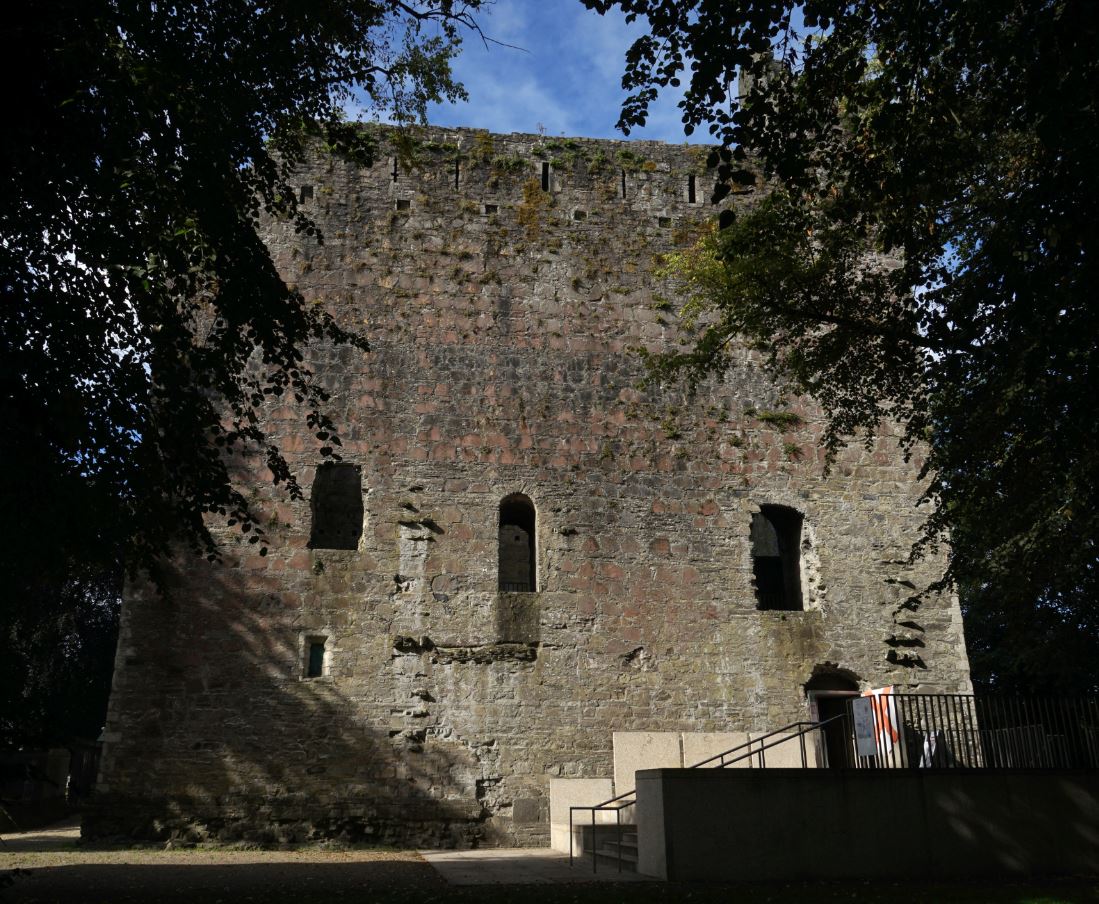1534 - the Rebellion of 'Silken' Thomas fitzGerald
In 1513, the same year as the death of Garret Mór, or Gerald the Great, 8th earl of Kildare, his grandson Thomas was born in London. He was the son of Gerald / Gearóid Óg fitzGerald, 9th earl of Kildare. By the time Thomas reached adulthood, the English crown had decided to move away from depending on the local Anglo-Irish, in particular the earls of Kildare, to govern the lordship of Ireland, and returned to the earlier policy of appointing English-born military men. Thomas’ father, the 9th earl of Kildare, had seen his authority and position in Ireland gradually eroded during the 1520s. In July 1532, the 9th earl was reappointed as Lord Deputy, but this seems to have been a case of king Henry VIII keeping his enemies close, and the earl found himself frequently undermined by Thomas Cromwell, one of the king’s most trusted advisors. Cromwell’s proposals to the king for reforming the government in Ireland included the abolition of the old feudal system of local government, such as the Liberty of Kildare, which had effectively been ruled by the earls of Kildare as an autonomous state within a state. In truth, Cromwell and his king were not yet ready to implement an overhaul of government in Ireland, but the astute earl of Kildare sensed the threat.
In February 1534, the 9th earl of Kildare was summoned to London. Before he left, he assigned his son, 21-year-old Thomas, Lord Offaly, as his vice deputy at the head of the English government in Ireland. The earl also appointed a council of family and close allies to advise his son, and even took possession of the royal ordnance that was intended for the king’s army in Ireland. By the time he reached London, the earl was in poor health. His attempts to win over the king failed. In May, he ordered his retinue back to Ireland with a warning to his son not to come to London if ordered by the king. He also enclosed a pair of dice, seen by some as a coded message to prepare to take arms. On 11th June, accompanied by 140 armed horsemen, Thomas rode into St Mary’s Abbey in Dublin. Here, in the chapter house of the abbey, the king’s government in Ireland had convened a meeting of council. Thomas boldly and very publicly renounced his allegiance to Henry VIII to all in the room. The tradition that Thomas and his horseman had silken fringes on their helmets seems to have been a myth created many years later, but this event marked the beginning of a chapter in Irish history that has become forever known as the Rebellion of Silken Thomas. Henry VIII retaliated by committing the 9th earl to the Tower of London. For a short while it seemed possible that a deal might be negotiated between the two sides. However, an incident soon afterwards convinced the king that military intervention was required.
A few years previously, in February 1529, John Alen had arrived from England to take up office as the newly elected archbishop of Dublin. He quickly embarked on a programme of modernising the Dublin diocese. In particular, Archbishop Alen was keen to reclaim the vast estates and lands once owned by his predecessors. Since the 14th century, the Dublin archbishops had abandoned some of the estates on the southwestern fringes of the diocese, such as those on the borders of Wicklow and Kildare. Initially these estates came under the control of the local Gaelic families, but by the end of the 15th century they were taken over by the fitzGeralds. Archbishop Alen began legal action to reclaim these lands on behalf of the diocese, a move that put him in direct confrontation with the 9th earl of Kildare. On 26th July 1534, six weeks after Thomas fitzGerald had openly rebelled against the king, Archbishop Alen left Dublin castle and boarded a ship bound for England. The ship ran aground in the bay near Clontarf and the following morning he was arrested by Thomas Fitzgerald. A few days later, the archbishop was murdered by Thomas’ supporters. What had begun as an act of defiance and a war of words had now claimed its most high-profile victim, and events quickly gathered momentum.
Thomas had already gathered much support throughout Ireland, amongst many of the more powerful Gaelic families in Leinster and also many of the old Anglo-Irish families who had allied themselves with the earls of Kildare. On 2nd September, Gearóid Óg fitzGerald died in London, and Thomas now assumed the family title as 10th earl of Kildare. Thomas had succeeded in taking the royal castle at Carlow, and now began a siege of Dublin castle, which was defended by a small army of Crown forces. However, most Irish towns, including Drogheda and Waterford, refused to support the rebellion. The citizens of Dublin also resisted Thomas, and by October his attempted siege of Dublin Castle had failed. The main turning point came with the arrival on 24th October of Sir William Skeffington at the head of a 2300 strong royal army, who were warmly received by the loyal (though often fickle) citizens of Dublin.
There was little confrontation between the two sides in the run up to Christmas, and Thomas had no intention of meeting the royal army in open battle. Early in 1535, Carlow Castle was retaken, and the momentum was firmly with the Crown forces. In March, Skeffington besieged Maynooth Castle, an ancestral stronghold of the fitzGeralds since the 1170s. Several large pieces of artillery were deployed by the royal army, and on 23rd March, after a week-long siege, the castle was stormed and captured. Forty defenders who had survived the siege were summarily executed. This was the only major engagement of the Kildare rebellion.
After the fall of Maynooth, Thomas reverted to guerrilla tactics, but by now his rebellion was effectively over. In August, he eventually surrendered to Lord Leonard Grey, his step-mother’s brother who recently arrived as marshal of the king’s army. Grey promised Thomas that his life would be spared and implied that he would be pardoned by the king. This was not a promise that Grey could keep. Thomas was dispatched to London to answer to the king and in October he was arrested and imprisoned in the same cell his father had died a year earlier. Thomas’ grandfather, the 8th and great earl of Kildare, had been pardoned after his coronation
of a pretender to the throne of England in his failed attempt to usurp Henry VII. Thomas would receive no similar reprieve from Henry VIII. On 3rd February 1537, he was executed at Tyburn, together with his five uncles and many others who had supported the Kildare revolt. The result was an almost complete annihilation of the Kildare dynasty of fitzGeralds.
The rebellion of ‘Silken’ Thomas had not really extended beyond Leinster. However, its impact was far more widespread. The influence of the earls of Kildare in Ireland was over. They would no longer dominate the administration and government of Ireland. Power was gradually being taken back by government officials, and over the coming decades, this would be felt across the entire country. For the time being, however, one powerful family remained at the centre of the Irish political stage – the fitzGerald earls of Desmond. Soon, that stage would also be set for the return of their chief opponents - the Butler earls of Ormond.


